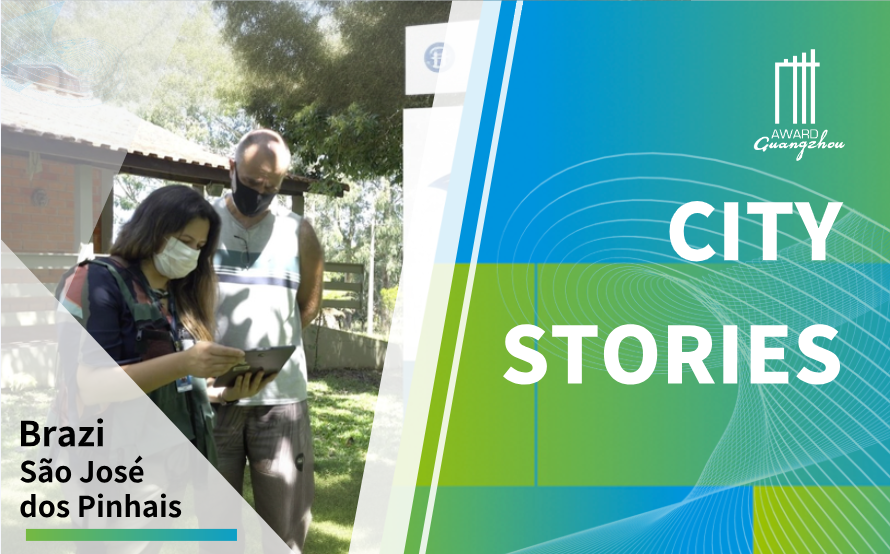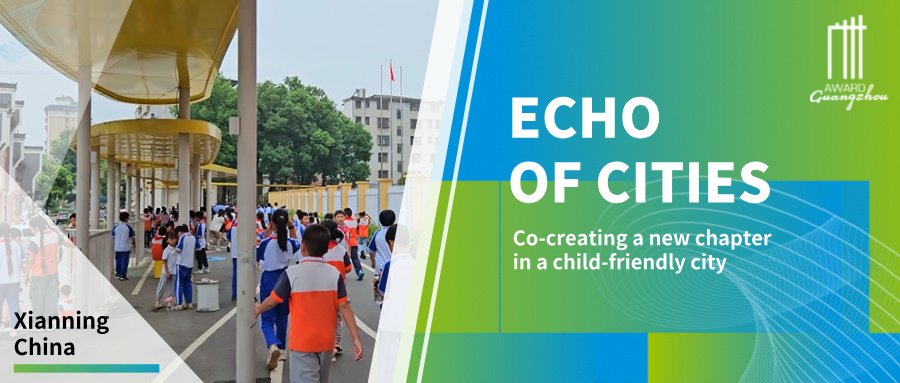Bogotá, Colombia
Project 1: Bogota’s Green Hospitals

Background Information
The project was initiated with the Development Plan for 2012-2016 from Bogotá’s City Hall, in the framework of the policies that involved the environment and the community. It was structured based on the Green and Healthy Hospitals global agenda issued by the Health without Harm Organization, an international coalition of which the hospitals of the public network are members. Given the international recognition of the program, it has been strengthened with the implementation of environmental commitments that have been signed as of the COP20 and 21.
Goals of the Initiative
Reduce the negative impacts on the environment as well as health risks for workers, patients and the general community through the implementation of clean technologies in the health sector and with the consolidation of environmental responsibility practices, contributing to the strengthening of integrated environmental systems achieving higher standards of quality in management in health care.
Reduce energy consumption by implementing strategies for efficient use of resources in public hospitals.
Parties and Partners to the Initiative and Resources Used for Implementation
The main point of difference is that we are the first city in Colombia that has implemented the Green Hospital Program for the public sector, having the District Secretary of Health as the local leader and authority in charge of health in the capital. We have been working fluently with the District Environment Secretary, and other district entities, unifying criteria to strengthen environmental management in the health sector in the Capital District.
Resources for the Green Hospital Program have been allocated by
Bogotá’s City Hall to the District Secretary of Health in order to create healthy environment for the provision of health services.
It has also received technical cooperation from
•the Green and Healthy Hospital Global Network
•PAHO / WHO
•JICA
Innovation for the Initiative
The initiative can be considered evolutionary as the activities implemented have shown progressive results over time. The hospitals of the district public network are allowed to set a precedent in the efficient use of energy resources through training strategies and awareness among the users and working staff, advertising the appropriate use of resources and implementation of LED technology, wind, photovoltaics and the use of natural lighting among others.
Innovation has been applied in
The innovation of this initiative lies in various stages of the process:
•Policy and Strategy: since it was created and inspired in the city’s development plan for 2012-2016.
•Planning, design and implementation: Based on the proposal of the Global Agenda issued by Health Care without Harm, the governing body of health in Bogotá - the District Secretary of Health of Bogotá, planned, designed and implemented the Green Hospital Program directed to the hospitals of the public network, fulfilling give of the 10 objectives of the agenda.
Obstacles and Solutions to the Innovation
•Reduced allocation of financial resources for implementing different strategies of the Green Hospital Program in hospitals of the district public network.
•Reduced allocation of resources for achieving goals of energy efficiency in public hospitals of the district network.
Outcomes and Assessments
With the implementation of the Green Hospital Program and its energy efficiency initiatives, reductions were achieved by 3.1 percent in the consumption of electricity in the district public hospital network. It’s important to note that during the same time, the productivity of the hospitals increased 26.1 percent, which has proven that the strategies worked out correctly and the goals are being reached.
Meanwhile, hospitals reported that personnel as well as the community had a high participation in training and awareness programs.
Nowadays, there are only preliminary data on GHG emissions produced by consumption of energy for the district public hospitals network.
At the district level, a measurement exercise of carbon footprint by entities was made. The health sector obtained an overall average by the level of complexity:
Level I : 81.01 ton CO2e / year,
Level II : 159.61 ton CO2e / year and
Level III : 259.59 ton CO2e / year,
This yielded an average emission of 166.74 ton CO2e/ year, highlighting the need to raise further information that covers all the health services subnets (according to the new health model implemented in Bogotá), and establish achievable emissions reduction targets and demonstrate the work done so far.
Methods Applied
As part of the last two versions of the Conference of the Parties in the Convention of climate change of the United Nations - COP 20 and 21, Bogotá promised to mitigate the impacts of climate change. Led by the District Secretary of Environment, the first measurement of carbon footprint issued by the district entities was made. Different training sessions were completed, allowing the identification of the main activities that produced greater negative impacts on the environment, according to which strategies will be proposed for its mitigation.
Project 2: School at Hospital

Background Information
In 2010 the Colombian Children's Heart Foundation and the Secretary of Education of Bogota designed a pilot project to offer children and teenagers the possibility to continue studying, learning and socializing. This project also sought to offer a more comprehensive service and life quality to these children and teenagers.
Due to the success of this pilot project, the Bogota City Council (a local government authority) approved and declared the project School at Hospital a local law known by the name Agreement No. 453 of the Bogota City Council of November 24, 2010 (Acuerdo del Concejo de Bogotá el 453 de noviembre 24 de 2010).
Goals of the Initiative
In 2020 School at Hospital will have an approved and qualified educational method, a working structure that will cover every hospital in the city and skilled teachers trained in pedagogy, psychology and basic medicine.
Parties and Partners to the Initiative
This project is accomplished through public-public and public-private partnerships. The first partnership involves the Secretary of Public Health and the Secretary of Education, both of which are from the Bogota City Hall. The second partnership was established between the Colombian Children´s Heart Foundation (private foundation) and the aforementioned secretaries.
Although the budget to develop the project comes from the public sector, some NGOs and corporations have donated books and school materials to stock the hospitals and classrooms. Some cultural groups also have offered free concerts, dances and theater performances.
Resources Used for Implementation
This program is mainly financed by Bogota City Hall. The Secretary of Education and the Secretary of Public Health are in charge of teacher training, and convincing hospitals to adapt a room in a classroom.
Through several opportunities the project School at Hospital has received donations from the private sector and community, such as books, school materials and cultural activities.
Innovation for the Initiative
School at Hospital focuses on the rights of hospitalized children and teenagers such as seeking inclusion, equity and strengthening basic instrumental skills, which contribute to facilitating a return to the formal education system. It also helps children to develop autonomy and the ability of decision-making and time management, and also strengthens their independence and computer skills. These issues integrate and facilitate communication with the outside world, their families and friends. For all these reasons, we consider the project evolutionary and revolutionary. The project decreases the school dropout rate and gives patients the possibility to continue with their education.
Innovation has been applied in
One of the most innovative aspects of the project is the simultaneous assistance of children from different school years and ages in the same room of School at Hospital. This has been possible because of the educational method design by the Secretary of Education, based on individual tutorials in diverse groups. This method has allowed children to socialize with other young patients, which has contributed to lessening emotional stress.
Obstacles and Solutions to the Innovation
The project has seen cultural and financing obstacles. First, as a cultural obstacle, it is hard to convince patients and families that someone hospitalized can continue other activities of their lives when suffering an illness. As a financial obstacle, the private hospitals are not profitable.
Outcomes and Assessments
•Since 2010 there have been 24 rooms of School at Hospital opened.
•The Secretary of Education has assigned and trained 50 teachers and opened six private hospitals since 2010.
•The project extends to 20 districts in Bogota.
•18,374 students have been benefited.
•The Secretary of Education has arranged and has undertaken part in several national and international summits about the topic.
•The Secretary of Education has developed an educational model for project School at Hospital.
•The Secretary of Education has hired a specialist group to support and advise the project.
Methods Applied
School at Hospital seeks to prevent school desertion, guaranteeing young patients to continue their education, and assuring their rights to education and health through an educational curriculum based on "essential learning for the good life". The values consider four essentials-to do, to know and to live together.
-
 City Stories | S?o José dos Pinhais, Brazil Digital Technology and Social Participation in Surveillance and Definition of Priority Areas and Actions for the Control of Yellow Fever in Brazil
City Stories | S?o José dos Pinhais, Brazil Digital Technology and Social Participation in Surveillance and Definition of Priority Areas and Actions for the Control of Yellow Fever in Brazil -
 Echo of Cities | Xianning, China: Co-creating a new chapter in a child-friendly city
Echo of Cities | Xianning, China: Co-creating a new chapter in a child-friendly city -
 Empowering a Low-Carbon Future through Urban Innovation
Empowering a Low-Carbon Future through Urban Innovation -
 City Stories | Los Angeles, USA:Open-Source Tools for Action on the SDGs
City Stories | Los Angeles, USA:Open-Source Tools for Action on the SDGs


 City Stories | S?o José dos Pinhais, Brazil Digital Technology and Social Participation in Surveillance and Definition of Priority Areas and Actions for the Control of Yellow Fever in Brazil
City Stories | S?o José dos Pinhais, Brazil Digital Technology and Social Participation in Surveillance and Definition of Priority Areas and Actions for the Control of Yellow Fever in Brazil Echo of Cities | Xianning, China: Co-creating a new chapter in a child-friendly city
Echo of Cities | Xianning, China: Co-creating a new chapter in a child-friendly city Empowering a Low-Carbon Future through Urban Innovation
Empowering a Low-Carbon Future through Urban Innovation City Stories | Los Angeles, USA:Open-Source Tools for Action on the SDGs
City Stories | Los Angeles, USA:Open-Source Tools for Action on the SDGs




















 Tel: +86 20 3780 4434
Tel: +86 20 3780 4434 Email: info@guangzhouaward.org
Email: info@guangzhouaward.org Address: Rm 1609, FuLiXinTianDi, No.307 Guangzhou Dadao Zhong, Yuexiu District, Guangzhou, Guangdong, 501600, PRC
Address: Rm 1609, FuLiXinTianDi, No.307 Guangzhou Dadao Zhong, Yuexiu District, Guangzhou, Guangdong, 501600, PRC




